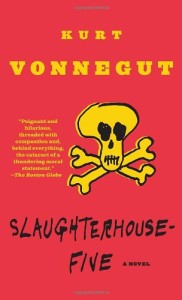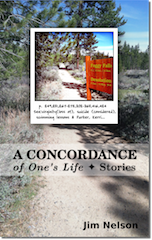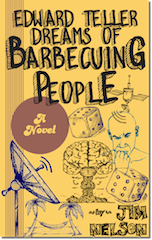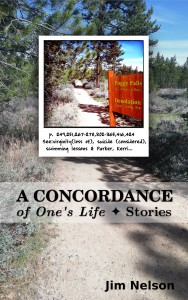See the Introduction for more information on “Twenty Writers, Twenty Books.” The current list of reviews and essays is located at Continuing Series.

Early one August morning in 2011, I set off for Dresden. I was lodging at a surprisingly spacious budget hotel located in what was once known as East Berlin. I showered, snagged a Brötchen from the breakfast table downstairs, and rode public transit to Berlin’s central train station, the Hauptbahnhof.
The Hauptbahnhof was a modest-sized transportation hub with a grand planar green-glass facade and crystal strands of staircases and escalators within. A number of national and international rail lines passed through the station on all levels.
In contrast to its modernity, the area surrounding the Hauptbahnhof appeared bombed-out. Weedy lots and half-built (or half-demolished) concrete structures of uncertain purpose surrounded the station, even though it was located in the dead center of town, and not the outskirts where this sort of thing might be excused.
In 2011, dereliction was not unusual in the eastern reaches of Berlin. The area that was once West Berlin was clean, modern, bustling—as sleek and efficient as the capitalism it had boasted of to its neighbors during the Cold War. What was once East Berlin was largely a patchwork of low-lying buildings, many redolent of America’s 1970s aesthetics bereft of its most garish extremes. Anything not man-made was lush and overgrown from the humid summer. (Berlin, my travel guide explained, was built on a swamp.) Buildings with blasted-out holes in the plaster stood here and there in East Berlin, the rubble having been hauled off but the damage not repaired. As I learned from the natives, Berlin was still recovering from forty years of Communist rule, where counterrevolutionary ideals like aesthetics and grounds-keeping were not prioritized.
Having visited Munich a few times, I would bet a stein of beer that the meticulous, efficient Bavarians would never have allowed for this situation to sustain. For any undeveloped lot, the Bavarians would have installed a beer garden or a park or some nice shopping. Munich is the neighbor who keeps their lawn trim and packs away the Christmas decorations on Boxing Day; Berlin is the family with the half-built additions and a porch painted a color intended for the whole house, but Dad never got around to finishing the job. It’s for those reasons I found what was once East Berlin relaxed and livable.
Having visited my favorite beer garden in all of Europe the night before, I didn’t wake quite early enough. I missed my train to Dresden by precious minutes, in part due to being lost in the Hauptbahnhof‘s Escher maze of escalators. Running up to the platform for Dresden, the train chugging eastward, I wondered if this was a bit of Vonnegutian fate, the kind of nondescript event that leads to major ramifications for the character later in the book.
Literary tourism
My visit to Dresden bore some emotional weight. It would probably be my only chance to see the city Kurt Vonnegut wrote about so prominently in Slaughterhouse-Five.
Literary tourism is a recurring compulsion in my life. I’ve sought out Hemingway’s Key West house and the six-toed cats who drink from an old bar urinal in the garden; Henry Miller’s ramshackle Big Sur cabin, surprisingly spartan for a hedonist; Beowulf under glass at the British Museum in London, a city practically designed for literary tourism, right down to the pub reproducing Sherlock Holmes’ parlor; even Mark Twain’s cabin in California’s Gold Country where he reportedly penned “The Celebrated Jumping Frog of Calaveras County”. Literary tourism has even made its way into some of my stories, in particular “A Concordance of One’s Life”, and to a lesser extent Everywhere Man.
With only one more free day in Germany, I woke the next morning even earlier and made it to the Hauptbahnhof with time to spare. As my train left the platform, I was treated to the very European experience of an Italian family arguing with the unflappable German conductor over seats, some business about assigned seating and Second Class. As English was the common language between the two parties, I was able to follow the argument. The conductor eventually conceded and moved on, leaving the Italian family to overtake the compartment. The mother pointed out to me that there wasn’t enough room for all of them, and so I moved to the next compartment.
The train ride from Berlin to Dresden took two and a half hours. If I’d traveled the day before, I had planned to find a cheap room to crash in for the night. Now I had to make the same return trip in the late afternoon via the last train out of Dresden to Berlin.
The Slaughterhouse-Five Tour
In a different book, Kurt Vonnegut wrote
Ah, God, what an ugly city Illium is!
“Ah, God,” says Bokonon, “what an ugly city every city is!”
I was curious to see what had sprung up in Dresden’s place after the end of the war, after the firebombing. I was also curious how Vonnegut’s book was now received by the city. I had it in my mind that Slaughterhouse-Five was a literary gift to the City of Dresden, a rather lengthy handbill proclaiming to a cold and unaware world the war crime they’d suffered. Much like my trip to Hiroshima, I wasn’t quite sure what to expect. Everything I’d read about both cities focused on one subject: utter destruction.
I wondered if there were Slaughterhouse-Five tours of Dresden. If I ran a Slaughterhouse-Five tour of Dresden, I would dress up like Billy Pilgrim and pretend to be unstuck in time. I would start the tour with this:
“And now our tour concludes. So it goes.”
And end the tour with this:
“Welcome! My name is Billy Pilgrim. Today I’m your guide for the Slaughterhouse-Five tour. On your left is our first sight…”
For all my planning back at home, it never occurred to me to attempt to locate the actual slaughterhouse Vonnegut and the other American POWs huddled in during the Allies’ firebombing of the city, safe while Dresden burned to nubs and ash. I assumed (wrongly, it turns out) that the slaughterhouse had been demolished after the war. I focused on the city center itself rather than striking out to the industrial areas in search of the structure that saved Vonnegut’s life and changed American postwar literature.
On the last leg of my train ride, two young women joined me in the compartment, college-aged summer hitchhikers making their way across Europe. They hauled mountaineering backpacks with sleeping rolls, enough gear to scale K2. Minutes before the Dresden station, we struck up a conversation. They were from Switzerland.
“I’m American,” I introduced myself.
“We know,” they told me. Whenever foreigners know my nationality it’s a little discomfiting, like meeting someone who can read my thoughts.
They told me they headed to Amsterdam. When they said “Amsterdam” they giggled between themselves.
“I’m going to Dresden,” I told them.
“Why?” they asked me, honestly perplexed.
Anatomy of a church
 On my walk from Dresden’s station to its Old Town I passed a reminder of the city’s time under the German Democratic Republic. A broad mural spanned the second story of an otherwise unremarkable building. In the town I grew up, such a building would have been the advertising offices of the local newspaper or something equally mundane. This is what I expected to find in Dresden: postwar Socialist-drab architecture erected in a hurry and on the cheap.
On my walk from Dresden’s station to its Old Town I passed a reminder of the city’s time under the German Democratic Republic. A broad mural spanned the second story of an otherwise unremarkable building. In the town I grew up, such a building would have been the advertising offices of the local newspaper or something equally mundane. This is what I expected to find in Dresden: postwar Socialist-drab architecture erected in a hurry and on the cheap.
The building was forgettable but the mural was not. Like so much social realism to come out of the Communist bloc, it features idealized caricatures of workers—women in head scarves, men in Trotsky hats—raising their sickles and rifles in a show of unity. The mural stood over a wide walkway, where it could be admired as easily as it could be ignored.
 Once past the mural and its uninspiring canvas, I discovered Dresden was not ugly. In fact, the city was charming. Although seventy years had passed since the firebombing, plenty of time to rebuild, I did not expect to walk into such a minute jewel. With East Berlin as my primer to post-Communist Germany, I presumed Dresden would be a place of unkempt parks, weedy lots, and an opera house or civic chamber destroyed by the Allies and left as rubble with a statue before it memorializing the carnage.
Once past the mural and its uninspiring canvas, I discovered Dresden was not ugly. In fact, the city was charming. Although seventy years had passed since the firebombing, plenty of time to rebuild, I did not expect to walk into such a minute jewel. With East Berlin as my primer to post-Communist Germany, I presumed Dresden would be a place of unkempt parks, weedy lots, and an opera house or civic chamber destroyed by the Allies and left as rubble with a statue before it memorializing the carnage.
Strange then to see Dresden work so hard to appear as the city it was five hundred years ago, more medieval than mid-century. Its stout Old Town proudly exhibited a collection of limestone spires and copper-green cupolas. In the Middle Ages, labor was cheap, free when pressed into service by the Church. In the 20th century it wasn’t so cost-effective to refurnish a city to its fifteenth-century original without making do with mass-produced raw material—the financial temptation to erect a Disney reproduction of the original must have been great. There was nothing fake or inauthentic about Dresden’s Old Town as far as I could see.
 The rebuild was so complete, so meticulous, at first blush I wondered if anything remained to mark the firebombing that melted this city down to hot rubble in 1945. I found one, a block of permanently charred masonry standing in a cobblestone platz before a stunning Baroque church, Dresden’s Frauenkirche. A wordless plaque indicated where the block had fallen from the cupola above during the firebombing. In the human anatomy of the Frauenkirche, the masonry block fell from its heart.
The rebuild was so complete, so meticulous, at first blush I wondered if anything remained to mark the firebombing that melted this city down to hot rubble in 1945. I found one, a block of permanently charred masonry standing in a cobblestone platz before a stunning Baroque church, Dresden’s Frauenkirche. A wordless plaque indicated where the block had fallen from the cupola above during the firebombing. In the human anatomy of the Frauenkirche, the masonry block fell from its heart.
(I know now that many memorials for the Dresden firebombing exist, some in the city and others elsewhere in Germany. Some only exist on the Internet as frameworks for remembering. I didn’t visit Dresden to search out statues and plaques and modern art commissioned by governmental panels, but I did expect to more of these markers than I encountered.)
Hundreds of miles from the Berlin swamp, Dresden offered a cloudless temperate day, the air off the river smelling fresh. The church platz was ringed by bistros lively with business. Vendor carts served cold beer as fast as mugs could be filled. Standing aside the masonry block and surveying the scene, I developed a theory: Dresden understood that remembering is different than never forgetting.
Of course
My own failings hampered my time in Dresden. I don’t speak a lick of German. Unlike Berlin, where an English-speaker can manage thanks to a mostly-multilingual population, few people in Dresden spoke my native tongue.
Rendered all but mute, I pointed to the beer tap when I wanted a beer, pointed to the menu when I wanted a brat, and did my best to pronounce Bitte? and Danke schoen for everyone I had dealings with.
At one of the beer carts off the church platz I met an English-speaking couple. Not only did they speak English, they were American. I did not ask the obvious questions. With a beer in hand and the sun on my back, I was incurious to know where they were from or who employed them.
She was talkative. He seemed totally uninterested in conversation. She asked why I came to Dresden.
“Slaughterhouse-Five, of course,” I said. That “of course” made me out as a snoot.
She searched the air above her. “Is that a book?” She asked her husband if he’d read it. He murmured “Never heard of it” and drank more beer.
I told her she probably read it in high school. She couldn’t remember.
Fox tossing
When I asked why they’d visited Dresden, she explained it was a layover on their bus trip to Amsterdam. She giggled when she said “Amsterdam.” His attention never left his beer.
“Have you visited the castle?” she asked me. Their package tour included a ticket to Dresden Castle, now a museum. “Their king was the King of Poland. Twice.”
“Augustus the Strong,” her husband said, still not looking at me.
“Why was he called ‘the Strong?'” I asked.
“Because he was strong,” the husband said. “He could dead lift hundreds of pounds.” A bit excited, he finally turned on his stool to face me. “And he was a master at this game called fox tossing.”
“What’s fox tossing?”
“You throw foxes as high into the air as you can.” So animated, his beer was sloshing.
“Dresden?“
I trudged back to the train station passing the workers’ mural once more. Now I saw how out of place it was in Dresden, this relic of propaganda today apropos of nothing. Like Communism, it was not erased and it was not forgotten, nor was it intrusive or even damned, but simply left to be, a curiosity.
On the train ride back, I experienced a conversation I would have twice more in Berlin, all with Germans. When I mentioned visiting Dresden, the Germans’ response was always “Why?” They expressed in their best English that Dresden was a boring town with nothing to draw a tourist, especially one who’d traveled so far.
I asked each if they’d heard of Kurt Vonnegut or Slaughterhouse-Five. None of them knew of him, which wasn’t terribly surprising. I don’t read German novelists, after all. The name confused them, though, since Vonnegut is distinctly Germanic. I assured them he was American.
I told the Germans Vonnegut had written one of the greatest English-language novels of the past hundred years. “It’s about Dresden. He was there during the firebombing.”
Only one of the three knew of Dresden’s destruction. (They were younger than me, I should add.) All were bewildered at the idea of a novel about Dresden—”Dresden?“—especially a novel important enough to be taught in American schools and universities.
It floored them. “You’ve read a book about Dresden?”
Imagine the situation reversed. Imagine learning that every student in Germany read a novel about one of Bokonon’s ugly cities: Illium, or Bakersfield, or Walla Walla, or Duluth. Imagine if Germans eagerly traveled to Duluth because it was featured in a popular novel. Duluth?
The second bewildered German I encountered—”Dresden?“—sat across from me. We were at a picnic table in my favorite beer garden in all of Europe. It was muggy in Berlin and nine o’clock at night, strings of light bulbs threaded through the tree branches. When I arrived at the Hauptbahnhof, I went straight to the beer garden.
We were joined by an American who’d emigrated to Germany to marry. He had a wife and a child, and had carved out a rather enviable life in what was once East Berlin. The first time we met he told me he never wanted to return to America.
“What are you two talking about?” He had brought us fresh mugs of beer.
“He went to Dresden today,” the German told him.
“Sure,” the newly-minted Berliner said as he distributed the beer. “Slaughterhouse-Five.”


